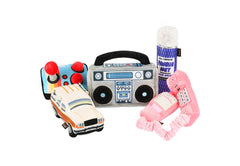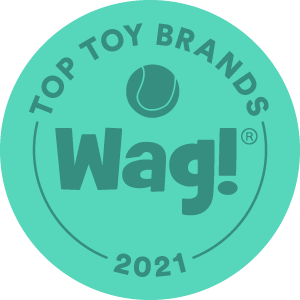Most pet owners consider their furry friends to be a part of the family. If we’re being honest, you’d do anything for your dog or cat, right? You might even buy them special food or spoil them with treats and toys more often than not.
Unfortunately, no matter how well you try to care for your fur baby, some of your everyday habits and home situations could be putting them at risk or doing more harm than good. Maybe you’ve had pets your whole life and you’ve always done things the same way. Maybe you got advice from a family member or friend on how to train and treat your furry companion.
Whatever the case, some of your common behaviors could pose a threat to your pet’s safety. Understanding some of those risks can help you to make changes quickly.
When your pet is an important member of the family, taking care of them is about more than toys, treats, and attention. It’s about everyday considerations that can improve their safety and ensure their well-being, whether you’re home or not.
With that, let’s take a look at some of the harmful things you could be doing to your pet without even realizing it.
Dangerous Car Ride Routines
Some dogs only have to hear the words “car ride,” and they jump into an excited frenzy. There’s nothing like watching your four-legged friend poke their nose out the window and enjoy the breeze as you drive through country roads.
But, have you ever thought about how safe your dog is on those fun and exciting car rides?
Some car manufacturers have started doing dog crash test ratings in recent years. Because many owners like to travel with their pets, this is important research that can save your furry friend’s life, and help you to keep them safe.
Tip number one? Don’t let your pet roam freely about the car when you’re driving. You wouldn’t let your small child or any other passenger move around the vehicle when it’s moving, and your pet should be no exception. Some cars now come with restraints specifically designed for pets. But, if yours doesn’t have those, you can take matters into your own hands with harnesses, crates, and carriers.
Additionally, consider things like:
- Having a barrier between the front and back seats
- Making sure your car is big enough for your larger pet
- Installing rubber mats for rear compartments so your pet won’t slide around (as a bonus, these will keep your floors and seats clean and safe from muddy paws!)
If you bring your dog with you to run a few errands, it’s just as important to keep them safe when you’re not in the car. Ideally, you should never leave your pet unattended in a vehicle. Even a few minutes alone could be disastrous. But, we understand – it happens from time to time!
If you must leave your pet in the car, keep them as safe as possible by making sure they have plenty to drink, keeping the air/heat on depending on the season, cracking a window when the weather is warm, and never leaving the car in a position where they could accidentally put it in motion. Be as quick as possible when you have to leave your dog alone in the car, and if you know you’ll be running errands that require you to go in somewhere, it’s probably best to leave your furry companion at home.
Keeping Them Safe When They’re Home Alone
It’s estimated that 20-40% of dogs have some degree of separation anxiety. Some of the common signs include:
- Urinating or defecating when they’re home alone
- Excessive barking
- Destructive behaviors
- Pacing
- Escaping
- Drooling and/or panting
Obviously, those traits and behaviors can be risky for your pet. They could get into something dangerous like household cleaning products or harmful food. They might also destroy something that could fall on them or hurt them in other ways.
Even if your pet doesn’t struggle with separation anxiety, curiosity can lead to just as many risks if they tend to get into things while you’re gone. Thankfully, there are plenty of quick safety tips you can put into practice for when your pet is home alone, such as:
- Crate training
- Pet-proofing their space
- Creating sound barriers if they bark
- Hiring a pet sitter to check-in
- Keeping choking hazards away
It’s also important to make environmental considerations when leaving your pet alone. For example, if you live in a warm climate and it’s the middle of summer, it’s going to be safer to leave your pets in a cool area, like the basement. Make sure they have plenty of water to stay hydrated and treat them to a cool, refreshing bath when you get home. In the winter, make sure your house is heated while you’re away, and keep your pet cozy by investing in a bed for them, as well as a few extra blankets they can use to stay warm.
Checking Out What and How They Eat
Does your dog gobble down their food immediately when you fill their bowl with kibble? You might think they’re just really hungry, or that it’s just in their nature to eat everything in their bowl all at once. No big deal, right?
Not necessarily.
Your dog’s eating habits can not only say a lot about the state of their well-being but how and what you let them eat could actually have more of an influence on their health than you realize.
First, take a look at how much they eat. Even if your dog gobbles every last morsel of food from their bowl like they’re starving, you could be feeding them too much. Overfeeding is a big problem for pet owners who simply aren’t aware of how much their four-legged friend should actually consume every day. Approximately 25-30% of the canine population in the U.S. is considered obese, and overfeeding is a big reason why.
If you’re worried you might be over-feeding your dog, first take a look at the back of their bag/can of food. Most manufacturers make it easy to see how much of their food your pet should be getting, based on their weight. If you’re still confused, talk to your pet’s veterinarian about how to cut back.
In addition to how much your dog eats, consider their actual dining behaviors. If they eat everything in their bowl quickly, for example, it could lead to digestive issues. When a dog is chomping down food quickly, it’s also likely taking in a lot of air. According to the American Kennel Club, this can cause a condition called “food bloat.” That refers to large amounts of ingested food just sitting in your dog’s stomach.
As you can imagine, it’s not a comfortable situation.
You can remedy how quickly your pet eats in a few different ways. Consider spreading out their kibble on a yoga mat or cookie sheet. Or, portion it out in a muffin tin and cover each section with a tennis ball. Your dog will still be able to get to the food with a little bit of work. The tennis balls will serve as small “barriers” that will naturally slow down their eating. It’s also a great brain game to keep them stimulated.
When you care for your pet, you’ll do anything to keep them safe, happy, and healthy. Don’t let the habits you already have in place be the ones that put them at risk. Consider these everyday situations that might pose a threat to your four-legged friend, and make the right changes to improve their safety.





